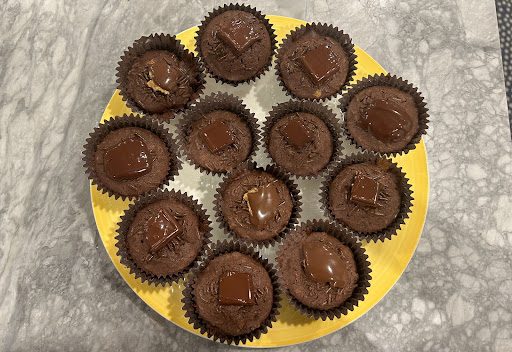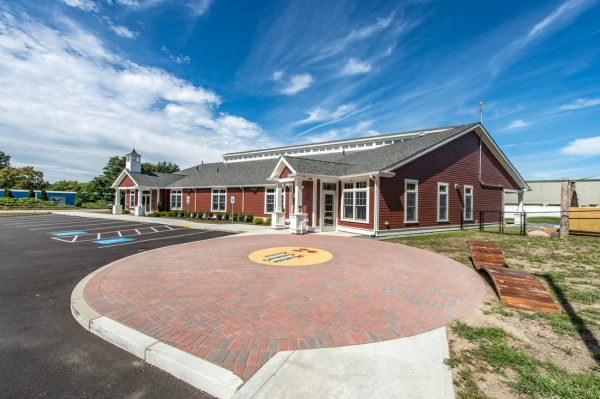Quick Takeaways from Workshop #3
It is free yet priceless. You can’t own it, but you can use it. You can’t keep it, but you can spend it. Once you lose it, you can never have it back. What is it? It is time. On Wednesday, January 20th, Associate Director of Montrose’s LifeCompass Institute Mrs. Kris held her third Habits of Mind workshops. The topic was “It’s About Time: Strategies for Working Smarter, Not Harder (& Finding Time for Joy).”
Time is everywhere and nowhere. Some days feel like the days are moving very fast and others feel very slow. Nowadays, many people complain that they do not have enough time to do what they love. Though there is no panacea for our “time crisis,” there are strategies that can help us manage our time better.
Before you read the strategies, reflect on these questions:
- Do I have a system for organizing my time?
- What type of activities do I procrastinate with?
- What type of activities inspire my productivity and focus? For example, exercise, healthy eating, sleep, time off, and timed work using the Pomodoro Method. Mrs. Kris uses the acronym HOSE: healthy eating, overstimulation, sleep, and exercise.
- What are my “time traps” or something that you do which makes time feel like time went by quickly, but you did not feel good after doing that task?
Your answers to these questions will help you figure out what strategy may work best to help you target what to focus on for your unique time needs. Another experiment: try to make a time audit or record how you spend your time all day for a single day or week. The results of your time audit may astonish you. Reality might not be what you expect.
Strategy 1: Put Your Rocks in the Bottle First
One day, a university professor wanted to teach his students about how to make the most of their time. He put rocks in a jar and asked the students if the jar was full. They replied yes. He added pebbles to the rock jar and the pebbles filled the spaces between the rocks. The professor again asked the students if the jar was full. Once again, they replied yes. Lastly, the professor put sand into the rock and pebble jar and the sand filled up the remaining space in the jar. The professor asked his students one last time if the jar was full. They replied yes. The professor used the rock, pebble, and sand jar as a metaphor to time management. The rocks represent the truly important things in our lives like family, relationships, faith, health. The pebbles are secondarily important things like school and work. The sand represents things that are insignificant like televisions and phones. If you add the sand first to the jar, you will not have any space left for the rocks and pebbles. If you add the pebbles to the jar first, you can add the sand but you cannot add the large rocks. Putting in your rocks first allows you to do what you love, which will in turn make you feel like you have more time to do more tasks. In addition, putting your rocks in first will not cause the same level of burnout as putting the sand or pebbles first.
Strategy 2: Take Time to Plan Time
This strategy is very simple. All you need is a daily planner or a weekly to-do list and ten minutes of downtime. By taking a little time to plan your time for the next week, you actually save time since you are forward planning. Bullet journaling is a form of this type of planning. There is also a type of planning called backwards planning (many teachers use this type). For example, if you have a test next Friday, you would take a glance at your next week and plan backwards, setting aside time to study. Another example would be if you had an essay due next Thursday, you would backwards plan and write down in your planner that you would work on your body paragraphs on Monday, your introduction and conclusion on Tuesday, have your friend peer edit on Wednesday, and turn in the essay on Thursday.
Strategy 3: Practice Saying “Better-Than-Nothing” and “Good Enough”
Since Montrose is filled with hard working, achieving students, this strategy to moderate your expectations is extremely helpful. It is important to remember that perfection is the enemy of good. I know that I myself have a hard time accepting this statement. But perfectionism leads to anxiety, and anxiety is a brain drain. This strategy advises you to tackle your rocks and pebbles in a way that makes you feel better than if you did nothing at all. For example, you need to study for a math test but you also need sleep. Ten minutes of studying is better than nothing. Another example is if you love art but your school work takes a lot of time to finish, and you cannot seem to find time to draw or paint. Drawing just a little doodle or something small is better than nothing. The phrase “good enough” is important especially when you have a lot of competing things and are prone to burnout. If you have a math test and a paper due on the same day, you may not be able to turn in both to your best quality. But, giving your best effort is good enough.
Strategy 4: The Pomodoro Method
Though the Pomodoro Method was in the last review of Mrs. Kris’ workshops, it is amazingly helpful for focus and time management. I tried it for a week, and I felt so much more productive and focused while using the Pomodoro Method. Not only did I get work done, but I felt accomplished and satisfied after doing a Pomodoro session. I strongly recommend this strategy. Pomodoro involves non-distracted, focused work for 25 minutes, followed by a break to move your body and diffuse your focus and allow for memory-consolidation. This method combines the best of attention research while adding time for mental breaks to maximize focus and retention.
During the workshop, we watched an enlightening TedTalk, “How to gain control of your free time,” by Laura Vanderkam, a Time Management expert. Vanderkam argues that, instead of trying to save time by shaving off time from daily activities, we should build the lives we want, and then time will save itself. Time is highly elastic and will stretch itself to accommodate whatever we put in it. Your life is your choice — and so is your time. If you say that you don’t have time to do something, then that thing is not a priority for you. Vanderkam also offers three strategies to prioritize and manage your time.
- Write your next year’s school or work report card (the comments or grade that you want to receive). Then write what 3-5 things made the report card so amazing. Your answers can help you determine your goals for the next year and outline how to achieve those goals.
- Put your priorities in your schedule first. This strategy is exactly the strategy of putting your rocks first. If you prioritize something, then you will make time for it.
- Every Friday, make a three categories in lists: school, relationships, self. Plant the activities under each category into your schedule. This planning strategy is the same as the taking time to plan a strategy, but is more specifically geared toward your rocks or your high-value priorities.
The quote that stuck with me most from Vanderkam’s TedTalk is “There is time. Even if we are busy, we have time for what matters. And when we focus on what matters, we can build the lives we want and the time we’ve got.” Out of 168 hours in a week, if 49 are spent at school and 56 are spent on sleep (if you are getting 8 hours, which I hope you are), then you still have 63 hours left in the week (or 9 hours per day) for other things like spending time with family and friends, exercise, and homework. Thank you for taking your time to read this article, and I hope that Mrs. Kris’ strategies will help you find time to do things that you love. Make sure you attend Mrs. Kris’ next workshop about The Brain-Boosting Power of Sleep & Exercise on Wednesday. January 27 at 12:45 PM.
Neha Sunkara ‘21, Food and Wellness Editor
21nsunkara@montroseschool.org















